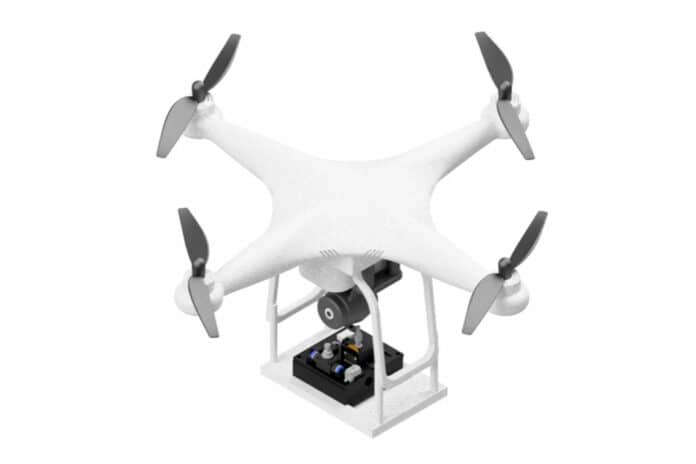Air pollution is a serious health hazard as it can lead to the development of asthma and other health conditions. Therefore, the need for accurate and continuous monitoring has become more urgent than ever. While most air quality monitoring devices are stationary and placed just a few feet above the ground, it is important to note that pollutants can drift and disperse across different altitudes, making it difficult to get an accurate reading.
To bridge this gap, researchers from Brazil’s Federal University of Uberlandia and Universidade Federal de Goiás have developed a “lab-on-a-drone” system that can detect and analyze levels of pollutants, such as smelly hydrogen sulfide gas, directly in mid-air.
Hydrogen sulfide (H2S) is infamous for its putrid, rotten-egg odor and is considered one of the most unpleasant air pollutants. It occurs naturally in well water, volcanic emissions, and other sources but is also produced as a byproduct of petroleum refineries and wastewater treatment plants. Exposure to elevated levels of H2S can cause irritations, and in high enough amounts, it can be toxic.
Currently, most methods of measuring H2S and other pollutants rely on ground-based instruments, which are restricted in their range and scope. Satellites can collect measurements at higher altitudes, but they come with a hefty price tag. Some researchers have used unmanned drones to collect samples in mid-air, but the analysis still needs to be performed on the ground using traditional instruments.
Now, researchers led by João Flávio da Silveira Petruci have created an inexpensive “lab-on-a-drone” that could sample and analyze H2S gas while in the air and report the results in real-time. The system consists of a 3D-printed custom device mounted to the bottom of a commercially available quadcopter drone. It takes advantage of a unique chemical reaction between H2S and a green-glowing fluorescein mercuric acetate molecule, which glows less brightly when exposed to the gas.
When excited by an onboard blue LED light, the interaction caused a decrease in the green fluorescence intensity, which was detected and quantified by an onboard light sensor.
Researchers tested their drone at a wastewater treatment plant, where it sampled air at three different altitudes. The results were then transmitted to a smartphone via Bluetooth, allowing for real-time monitoring.
In the evening, there was a clear increase in H2S concentration as the drone increased altitude, though it remained within safe levels.
The proposed device resulted in a weight of 300 grams and an overall cost of US$50. The researchers say that with further development, their lab-on-a-drone system could be adapted to detect other pollutants in the future.
Journal reference:
- Vanderli Garcia Leal, Habdias A. Silva-Neto, Sidnei Gonçalves da Silva, Wendell Karlos Tomazelli Coltro, and João Flávio da Silveira Petruci. AirQuality Lab-on-a-Drone: A Low-Cost 3D-Printed Analytical IoT Platform for Vertical Monitoring of Gaseous H2S. Analytical Chemistry, 2023, DOI: 10.1021/acs.analchem.3c02719
